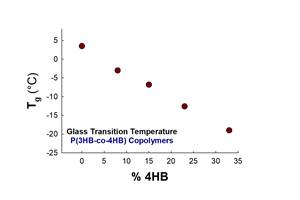PE Film Market Analysis: Institutional Can Liners
Huge market still overwhelmingly dominated by monolayer structures.

During 2014, approximately 1.398 billion lb. of PE was consumed in the production of institutional trash bags. With an average annual growth rate (AAGR) of 3.7%, this market is expected to increase to 1.561 billion lbs of PE resin consumption by 2017.
These are among the conclusions of the most recent study of the PE Film market conducted by ., St. Joseph, Mo.
Widths of institutional trash bags range from 13 to 69 in., with the most typical width being 30 in. Institutional trash bag lengths vary from 17 in. to 90 in., with the average length being 48 in. Institutional trash bag capacities range from 4 gal to 90 gal, with 33, 40, and 45 gal being the most common, Mastio notes.
Institutional trash bag film gauges range from 0.1 mil to 10 mils in the United States (U.S.) and 0.3 mil to 12.8 mils in Canada. Many producers stated there is not a typical gauge for institutional trash bags as the film gauge depends on the application, Mastio points out.
MATERIALS TRENDS
Many institutional can liner processors are beginning to use biodegradable resins such as polylactic acid (PLA) and synthetic polyesters in the production of institutional trash bags. PLA is a corn-derived biodegradable plastic that is designed to biodegrade in any standard compost bin. That said, none of the processors who participated in the Mastio study reported any use of PLA resin in the production of can liners during 2014.
Mastio reports that the resin most commonly utilized for institutional trash bags in 2014 was LLDPE. LLDPE provides added strength and tear resistance over low density PE (LDPE) resin, which makes the film less apt to puncture. LLDPE can be further down gauged without sacrificing strength. Various grades of LLDPE resins utilized in this market include the following: LLDPE-hexene, LLDPE-butene, LLDPE-octene, mLLDPE, and LLDPE-super hexene.
High density PE (HDPE) was the second most utilized material in this market during 2014. High molecular weight-HDPE (HMW-HDPE) and medium molecular weight-HDPE (MMW-HDPE) resins allow processors to manufacture institutional trash bags in thinner gauges that are about three times stronger and more durable than other trash bags constructed with LLDPE, LDPE, and/or medium density PE (MDPE), according to Mastio HDPE provides the highest level of puncture resistance of all PE resin material. However, HDPE requires more costly, specialized film extrusion equipment and is more difficult to extrude. Several film processors in this market lack the specialized film extrusion equipment needed to process HDPE materials.
Post-consumer reclaim was the third most commonly utilized material in the production of institutional trash bags during 2014. The reported utilization of PCR included post-industrial scrap resins consisting of PCR-LLDPE, PCR-LDPE and mixed PCR-PE (HDPE, LDPE, LLDPE and MDPE). Cost savings and adherence to mandates of PCR content by a few states, such as California; have also contributed to increased use of PCR in this market.
LDPE is also utilized in this market, mostly in blends with LLDPE and in multi-layer coextrusions. One advantage of utilizing LDPE resin is increased bag clarity, which is important for bags used in recycling programs. Also, LDPE resin, when used alone or in blends, has increased processing ease.
Utilization of LDPE-homopolymer, LDPE-ethylene-vinyl acetate copolymer (LDPE-EVA copolymer), and LDPE-ethylene-methyl acrylate copolymer (LDPE-EMA copolymer) grades were reported in this market during 2014.
TECHNOLOGY TRENDS
Monolayer blown film constructions remain the principal design for institutional trash bags, accounting for more than 94.3% of PE resin consumption.
MY TWO CENTS
It’s a bit surprising that monolayer structures are still the technology of choice in this market. It suggests to me that equipment assets in this market are aging. As more film-recycling streams start to develop, it’s possible that institutional liner companies will add more coextrusion capacity. As the report suggests, many are using PCR now, but apparently in blends with prime resin in single-layer structures.

Related Content
Deflection Elbows Eliminate Streamers for Large Film Processor
New elbows eliminate troublesome streamers to increase productivity at leading blown film processor.
Read MoreHow to Decrease the Extrudate Temperature in Single-Screw Extruders
In many cases, decreasing the discharge temperature will improve product quality and perhaps even boost rate. Here are ways to do it.
Read MoreShredding Thin Film: How to Do It Right
While many processors recoil at this task, a little know-how in shredding equipment, processing, and maintenance should add the necessary confidence.
Read MoreFilm Extrusion: Boost Mechanical Properties and Rate of Composting by Blending Amorphous PHA into PLA
A unique amorphous PHA has been shown to enhance the mechanical performance and accelerate the biodegradation of other compostable polymers PLA in blown film.
Read MoreRead Next
Lead the Conversation, Change the Conversation
Coverage of single-use plastics can be both misleading and demoralizing. Here are 10 tips for changing the perception of the plastics industry at your company and in your community.
Read MoreBeyond Prototypes: 8 Ways the Plastics Industry Is Using 3D Printing
Plastics processors are finding applications for 3D printing around the plant and across the supply chain. Here are 8 examples to look for at NPE2024.
Read More













